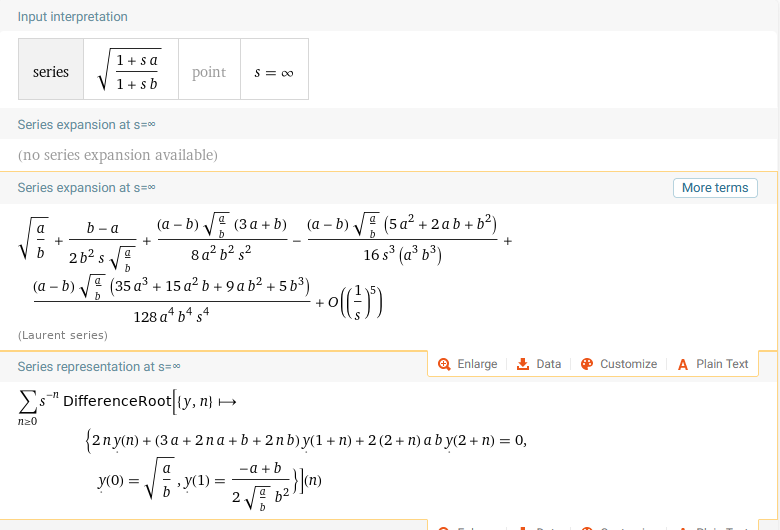This question seeks a definitive and precise answer to a question regarding the transient response of a transmission line.
Figure 10 of TI Application Note snla026a contains a graph showing (among other things) the current into transmission lines of various lengths driven by step voltages.
The discussion in the text of the application note gives a qualitative account of the current into the transmission line, but does not provide a formula for the current waveform. Furthermore, the graph is somewhat confusing.
[It appears to me that the following is what is illustrated in the graph. Initially, the applied 2V sees an impedance consisting of the 5\$\Omega\$ discrete resistor plus the 96\$\Omega\$ nominal characteristic impedance of the line, and jumps to approximately 20 mA. The current then falls, but the the formula for this fall is not clear. At approximately the time when the voltage signal arrives at the far end of the transmission line, the current stops it fall, and remains more or less stable (at least for the remainder of the time spanned by the graph.)]
Suppose one has a transmission line, long enough to be considered "infinite" for our purposes. Suppose the the driven end of the transmission line has a termination resistor thus:

simulate this circuit – Schematic created using CircuitLab
Assume the transmission line is "lossy" in the sense that there is some non-zero resistance per unit length of the wire.
Assume that the switch is initially open, and the transmission line is quiescent -- there is neither voltage nor current anywhere in the line.
When the switch is closed, what will be the voltage and current waveforms at the driven end of the transmission line? Particularly, what predictions about the waveforms can be made from The Telegrapher's (Heaviside's) Equations:
$$V_x = -LI_t - RI$$ $$I_x = -CV_t - GV$$
Whatever the waveforms may be, will it be the case that the instantaneous voltage is always equal to the instantaneous current times a constant?
[Based upon the TI application note, and the fact that the impedance of a transmission line varies with frequency, I do not believe that the instantaneous voltage is always equal to the instantaneous current multiplied by a constant. However, I have seen enough instances where the current into a transmission line prior to any reflections is the voltage divided by the characteristic impedance the question of whether that is in fact the case to be a point that may be in dispute.]
To some approximation, the voltage and current waveforms will have step-function behavior, with the ratio between voltage and current equal to the characteristic impedance \$Z_0\$ of the transmission line. That is, to some approximation, the transmission line will appear to be a pure resistance to the driving circuit. We also know that no experimental technique will ever demonstrate an exact step function. So, I am specifically asking whether the driving circuit will see the transmission line as a pure resistance according The Telegrapher's Equations, or whether those equations predict the driving circuit will see a more complex load. That is, I want an answer based on the mathematical model of the Telegrapher's Equations, and not simply an approximation which is sufficiently imprecise that the instantaneous voltage is equal to the instantaneous current times a constant. (Unless that is what in fact is predicted by the Telegrapher's Equations).
For reference, the impedance of a lossy transmission line is frequency dependent, and is given by:
$$Z=\sqrt{\frac{R+j\omega L}{G +j\omega C}}$$
If the transmission line is lossless, i.e. R=G=0, then
$$Z =\sqrt{\frac{L}{C}}$$
and the impedance is frequency independent.
Also, if \$\frac{R}{L} = \frac{G}{C}\$ the characteristic impedance will in that case also be frequency independent.
Edit: Although I do not presently have a formula for the transient response, if I have done my math correctly, the steady state current response resulting from closing the switch, (if R1 is 0), according to the Telegrapher's equations can be calculated thus:
In steady state the system variables do not change with time, so \$I_t = 0\$ and \$V_t = 0\$. So:
$$V_{x(steady)} = -RI_{steady}$$ $$I_{x(steady)} = -GV_{steady}$$
Therefore
$$V_{xx(steady)} = -RI_{x(steady)} = RGV_{steady}$$
Therefore
$$V_{steady} = k_1e^{\sqrt{RG}x} + k_2e^{-\sqrt{RG}x}$$
Since the voltage at the origin is determined by the applied step, and the voltage at infinity must be 0,
$$V_{steady} = V_0e^{-\sqrt{RG}x}$$
And
$$V_{x(steady)} = -\sqrt{RG}V_0e^{-\sqrt{RG}x}$$
$$I_{steady} = -\frac{1}{R}V_{x(steady)} = \sqrt{\frac{G}{R}}V_0e^{-\sqrt{RG}x}$$
At the origin, (assuming my math is correct)
$$I_{0(steady)} = \sqrt{\frac{G}{R}}V_0$$
This result implies that the apparent "impedance" at steady state (i.e. the input voltage divided by the input current) is NOT the not the nominal (i.e. high frequency) characteristic impedance of \$\sqrt{\frac{L}{C}}\$, but \$\sqrt{\frac{R}{G}}\$.
If my math is correct, any correct solution to the transient problem must give the steady state current as
$$I_{0(steady)} = \sqrt{\frac{G}{R}}V_0$$
and any solution that gives \$I_{0(steady)}=\sqrt{\frac{C}{L}}V_0\$ (except when \$\frac{G}{R} = \frac{C}{L}\$) must be incorrect.









